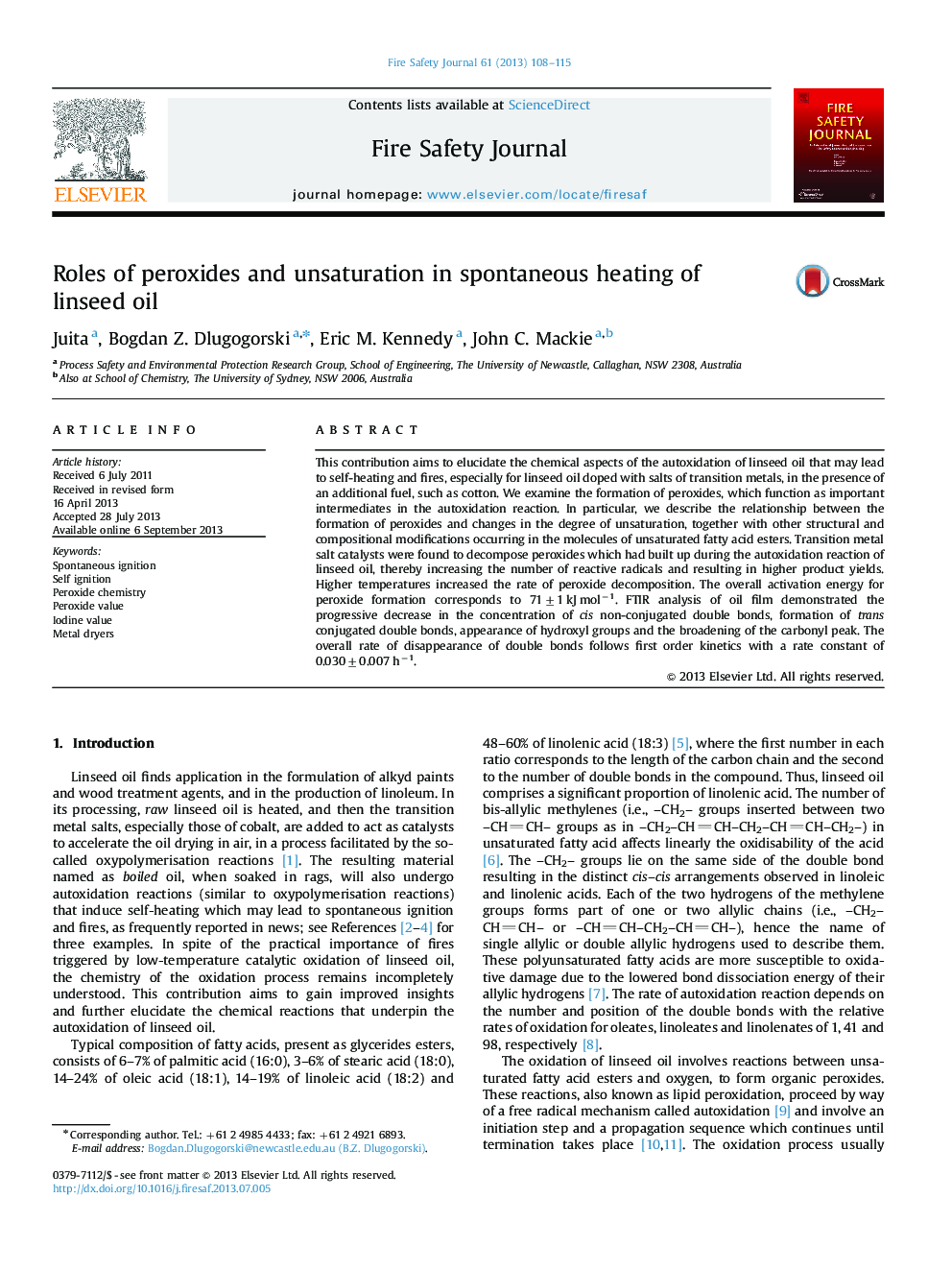| Article ID | Journal | Published Year | Pages | File Type |
|---|---|---|---|---|
| 6742198 | Fire Safety Journal | 2013 | 8 Pages |
Abstract
This contribution aims to elucidate the chemical aspects of the autoxidation of linseed oil that may lead to self-heating and fires, especially for linseed oil doped with salts of transition metals, in the presence of an additional fuel, such as cotton. We examine the formation of peroxides, which function as important intermediates in the autoxidation reaction. In particular, we describe the relationship between the formation of peroxides and changes in the degree of unsaturation, together with other structural and compositional modifications occurring in the molecules of unsaturated fatty acid esters. Transition metal salt catalysts were found to decompose peroxides which had built up during the autoxidation reaction of linseed oil, thereby increasing the number of reactive radicals and resulting in higher product yields. Higher temperatures increased the rate of peroxide decomposition. The overall activation energy for peroxide formation corresponds to 71±1 kJ molâ1. FTIR analysis of oil film demonstrated the progressive decrease in the concentration of cis non-conjugated double bonds, formation of trans conjugated double bonds, appearance of hydroxyl groups and the broadening of the carbonyl peak. The overall rate of disappearance of double bonds follows first order kinetics with a rate constant of 0.030±0.007 hâ1.
Related Topics
Physical Sciences and Engineering
Engineering
Civil and Structural Engineering
Authors
Juita Juita, Bogdan Z. Dlugogorski, Eric M. Kennedy, John C. Mackie,
